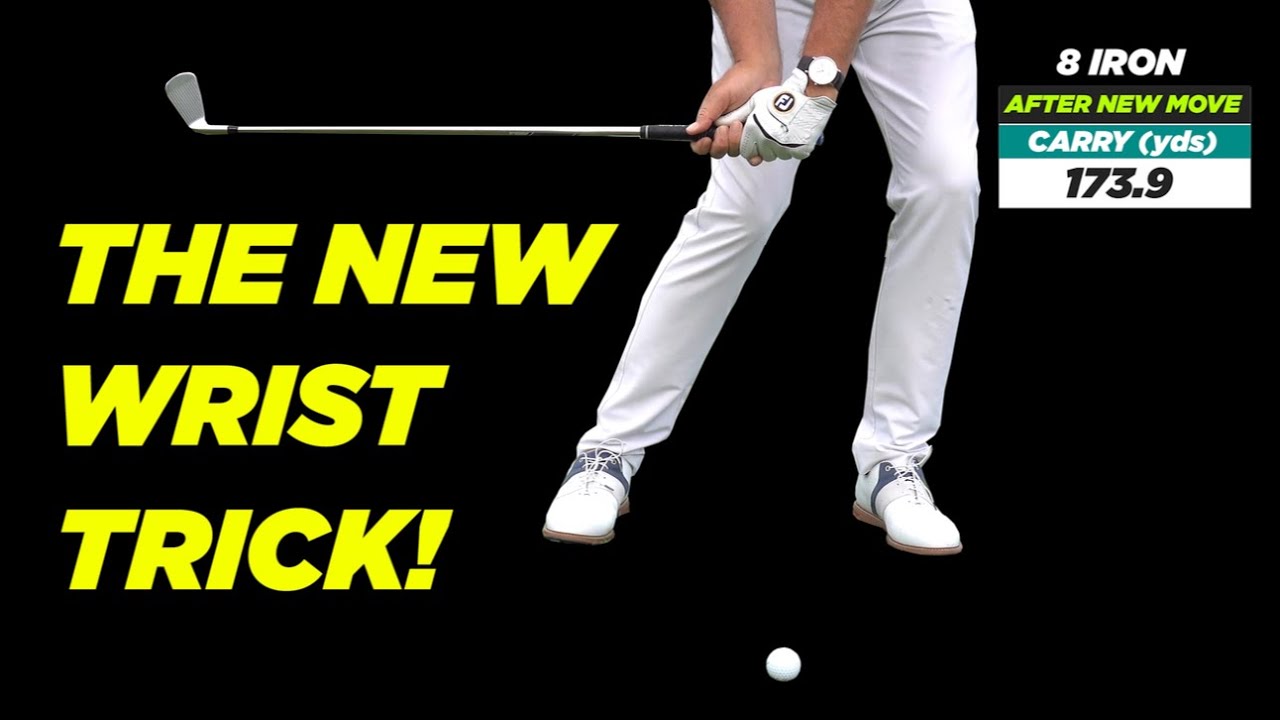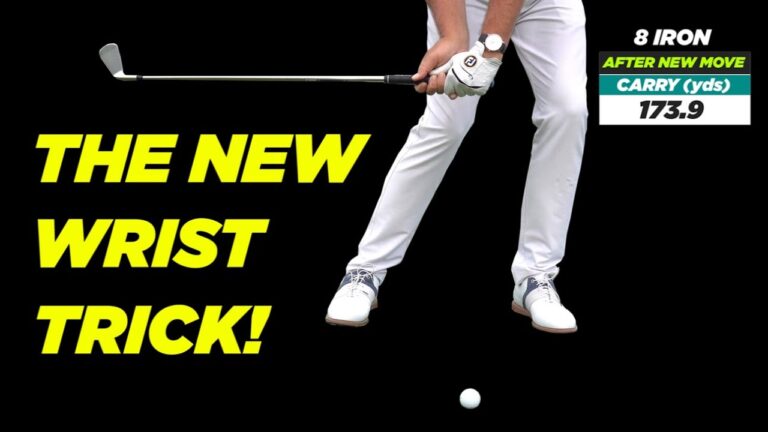
Unlock powerful golf swings with optimized wrist and shaft techniques. Discover how mastering these elements can lead to longer, cleaner, and more consistent shots.
This article, inspired by WorldClassGolf experts Craig Hanson & Dr. Rob Neal, reveals the secrets behind effective wrist and hand releases in golf. To enhance your swing performance, understanding your lead and trail wrist behavior, shaft lean importance, and incorporating simple drills for effortless speed is crucial.
Continue reading to uncover step-by-step drills, biomechanics insights, driver vs. iron releases, and practical practice routines to miraculously transform your game. Visual aids and structured practice plans are included for easier visualization and implementation.
Table of Contents
- Step 1: Understand the Wrist Mechanics in Golf
- Step 2: Grasp Shaft Lean and Why 12 Degrees Matters in Golf
- Step 3: Learn the Three-Ball Wrist Release Drill for Golf
- Step 4: Feel the Through-Swing Plane and Under Release in Golf
- Step 5: Driver vs. Iron — How Your Hands Change Direction in Golf
- Step 6: The Pause-at-the-Top Rhythm Drill to Generate Speed
- Step 7: Practice Plan and Routine for Immediate Improvement
- FAQ — Common Questions about Wrists, Release, and Speed in Golf
- Conclusion: Putting It All Together
Step 1: Understand the Wrist Mechanics in Golf
Avoid the common mistake of “rolling over” your hands at impact, which results in inconsistent shots. Instead, focus on lead wrist extension and trail wrist flexion to produce a whip-like motion. This technique harnesses stored energy, creating greater speed and precision.
“This is what your hand does through the golf ball. It doesn’t roll over like this. We don’t hang onto the angle all the way through. We’ve got to get this right wrist in this flex position.”
- Don’t roll your hands aggressively; maintain a stable clubface.
- Lead wrist extension ensures a stable impact face.
- Trail wrist flexion releases stored energy effectively.
- Release the club head past your body, avoiding early release issues.
Step 2: Grasp Shaft Lean and Why 12 Degrees Matters in Golf
A typical pro achieves about 12 degrees of shaft lean at impact, crucial for compressed strikes and optimal speed. Embrace this benchmark to improve your consistency and ball flight predictability.
“Twelve degrees of shaft lean is the PGA average. This creates consistent compression and contact.”
- Aids in compressing the ball for irons.
- Maintain favorable face orientation during impact.
- Facilitates repeatable ball flights and distances.
Step 3: Learn the Three-Ball Wrist Release Drill for Golf
The three-ball drill is an essential exercise for mastering wrist mechanics. Here’s how it’s executed:
- Line up three balls at normal intervals and tee height.
- Address normally and complete your takeaway and backswing.
- Aim for wrist flexion of the trail wrist and extension of the lead wrist through impact.
- At follow-through, feel the whip of the club head snapping past your body.
- Alternate between full swings and stop swings to fine-tune the motion.
This drill focuses on wrist awareness rather than ball result, honing the correct release and hand dynamics.
Step 4: Feel the Through-Swing Plane and Under Release in Golf
The through-swing plane and-under release concept helps in achieving smooth, consistent impacts:
- For irons, keep the club moving under the hands for an under release.
- Connect your hands and torso through the initial release.
Emphasize compact, synchronized wrist movements and strong club paths.
Step 5: Driver vs. Iron — How Your Hands Change Direction in Golf
Each club requires a distinct release approach:
- Irons: Close stance encourages an under release where the trail wrist flexes beneath.
- Driver: More distant ball setup changes the release path to around the body.
Understand these differences to switch clubs efficiently without altering your release technique entirely.
Step 6: The Pause-at-the-Top Rhythm Drill to Generate Speed
Pacing can significantly affect your swing speed and balance. Utilize the pause-at-the-top drill:
- Pause briefly at the top of your backswing.
- Focus on lead wrist extension and trail wrist flexion during downswing.
- Engage your entire body by trusting your wrist motion for speed.
This drill improves your swing rhythm, making speed more about timing than sheer force.
“When we do make a pause at the top… the truth was mind-blowing when I hit hard; I really picked up my distance.”
Step 7: Practice Plan and Routine for Immediate Improvement
Warm-up (Daily, 10 minutes)
- Mild stretches targeting shoulders, wrists, and hips.
- 10 slow swings focusing on balance.
- 3 half-swings emphasizing lead wrist extension.
Session A — Wrist Mechanics and Three-Ball Drill (30–45 minutes)
- Perform 10 wrist-focused practice swings.
- Alternate between full swings and checkpoints.
- Take notes of sensations and results.
Session B — Under/Around Release and Club Differences (30–45 minutes)
- Focus on different releases with varied clubs.
- Switching clubs helps identify hand path differences.
Session C — Pause-at-Top and Speed Generation (30 minutes)
- Pause at the top, then accelerate through to impact with wrist action.
- Focus on improving rhythm for consistent speed.
Commit to 3-5 sessions weekly for significant improvement in speed and consistency.
FAQ — Common Questions about Wrists, Release, and Speed in Golf
Q: Do I need to “roll over” my hands through the golf ball?
A: No, focus on lead wrist extension and trail wrist flexion. Correct this, and the club will travel past your body effectively.
Q: Why does a pause at the top help my speed?
A: It lets you load correctly, resulting in a coordinated and explosive release.
Q: How do I stop chicken-winging or my lead arm separating from the chest?
A: Maintain a light connection between your lead arm and chest, allowing your club head to pass efficiently.
Q: Is the release different for irons vs. the driver?
A: Yes, the directional approach varies but the wrist actions remain consistent.
Conclusion: Putting It All Together
Efficient golf swing relies on mastering wrist mechanics and shaft lean. Follow the structured drills and routines to achieve the desired effortless speed. Engage your wrists by practicing the whip-like release and incorporate club-specific techniques into your routine. Track your progress diligently to see measurable growth in consistency and swing speed.
By implementing these strategies, you’re on the path to joining the top ranks of golf players who excel through impeccable wrist and shaft mechanics.
Go to the range and refine your technique! Pay attention to the feeling in your wrists and keep a practice log for continuous improvement.


0 Comments